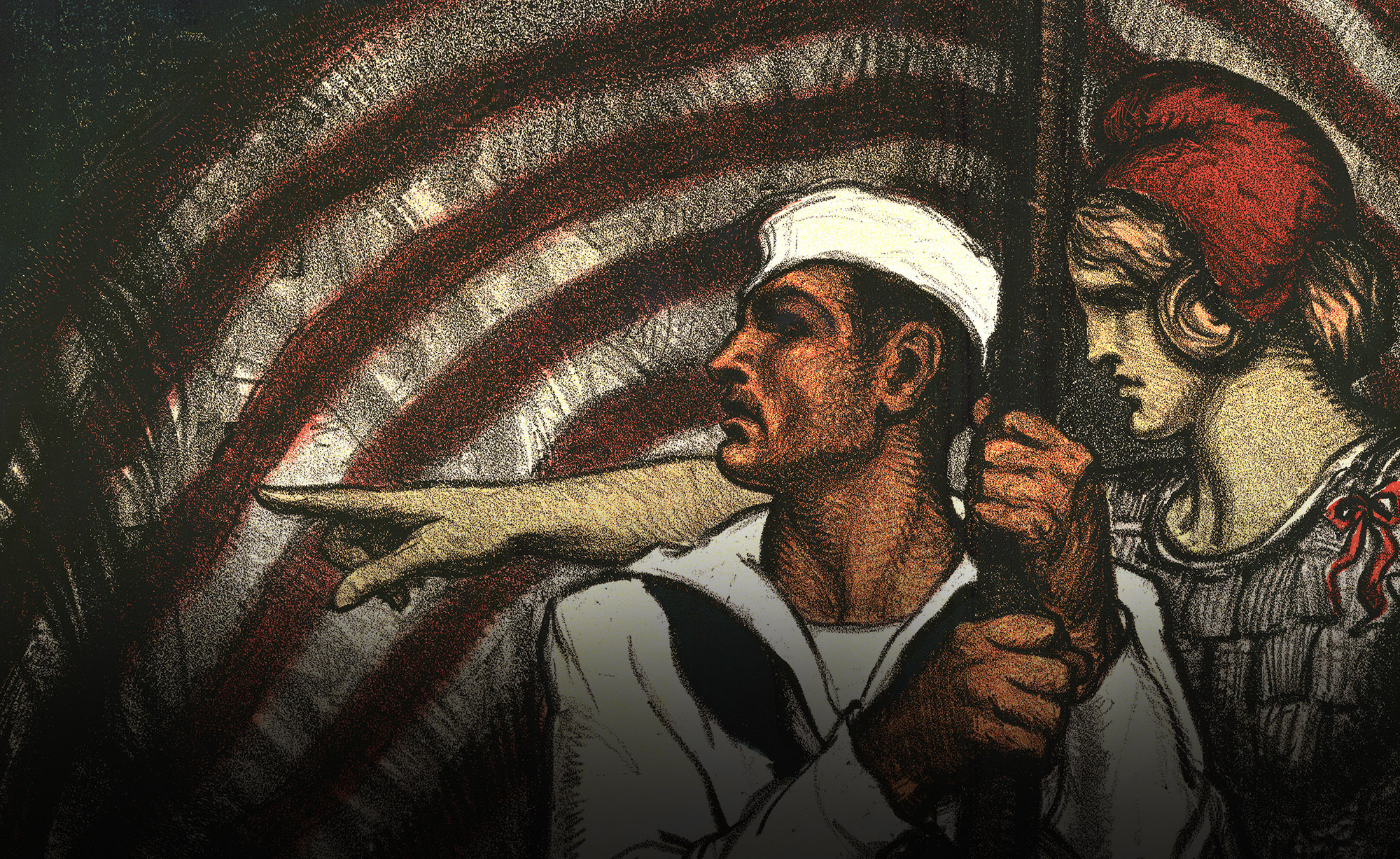| u0003_0004200_0000083 |
| Title | If you Can’t Go Across With a Gun |
| Creator | C.W. Love |
| Date | 1917 |
| Format | 41.3 x 28.3 in |
| Description | C.W. Love’s poster for the American Red Cross provides audiences with a means to participate in the war without taking up arms, and the emotional justification to do so. In the poster, a wounded soldier stands atop a mound of wreckage and military equipment overlooking a body of water with a faded silhouette of the American coastline featuring the Statue of Liberty in the background. The man’s left arm is in a blood stained sling, and with the right arm he gestures upward toward a large red cross in the sky, the recognizable symbol of the aid organization. Beside and beneath the soldier are two civilians, a young woman looking upward at the man with an expression of despair, and a child who mimics the soldier’s gesture. The colors are primarily muted with hues of green and black, but Love uses bright flashes of red to interrupt the visual scene and direct the attention of the viewer. The bright red of the cross in the sky, as well as the blood on the soldier’s tourniquet and on the ground, are visually striking, and the color serves as a means to symbolically connect the organization with the wounds suffered by soldiers and civilians during the war. Beneath the mound, the text instructs the viewer that while they might not enlist, they can still “COME ACROSS” by contributing to the “RED CROSS WAR FUND.” Love’s image not only depicts the human suffering associated with war, it elevates the U.S. generally, and the Red Cross specifically, as powerful and merciful. |
| Copyright and Terms | Images are in the public domain or protected under U.S. copyright law (Title 17, U.S. Code), and both types may be used for research and private study. For publication, commercial use, or reproduction, in print or digital format, of all images and/or the accompanying data, users are required to secure prior written permission from the copyright holder and from archives@ua.edu. When permission is granted, please credit the images as Courtesy of The University of Alabama Libraries Special Collections. |

